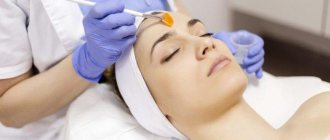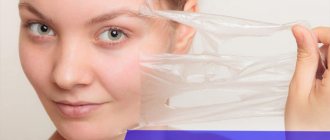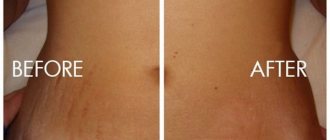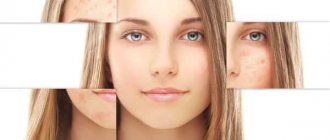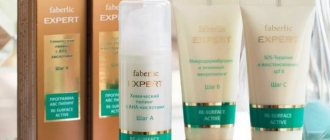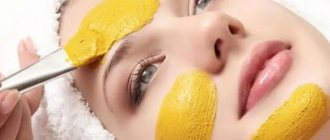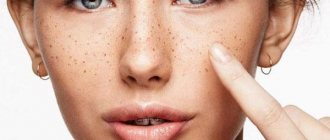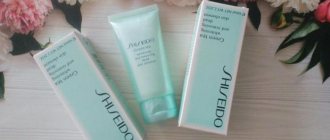Non-ablative lasers (eg, diode, non-ablative erbium, Fraxel) are less harsh on the skin and heat the skin so that the amount of damage is minimal. Keep in mind that since non-ablative lasers are not as powerful as ablative lasers, multiple sessions may be required to achieve the best results.
While chemical peels and laser resurfacing have many differences, there are also similarities in the benefits they offer and the problems they can solve. For example, a strong TCA (trichloroacetic acid) chemical peel can provide results similar to laser resurfacing. In some cases, both peels and laser can be used to treat acne and acne scars.
The two treatments also differ depending on skin tone. People with darker skin tones benefit most from chemical peels, as peels are an effective treatment for hyperpigmentation. Dark skin tones are often prone to hyperpigmentation problems such as post-inflammation hyperpigmentation (PIH), which occurs due to increased amounts of melanin in their skin. Chemical peels use acidic solutions to stimulate collagen production and contain antioxidants that are better able to penetrate darker skin and treat pigmentation.
Popular types of chemical peels:
Lactic Peel (Superficial Peel): Lactic acid is derived from milk and works best on dry and sensitive skin. It helps balance the skin's pH and gently exfoliates, dissolving dead skin cells.
Almond peeling – works on a superficial level, one of the softest peels, the fastest recovery without redness and irritation.
Glycolic Peel (Mid Peel): Glycolic peel consists of glycolic acid, which promotes the production of new collagen and elastin by targeting the outer layer of skin. It is often used to treat acne/acne scars and reduce pores.
TCA Peel (Mid Peel): TCA peel uses trichloroacetic acid and is more aggressive than glycolic peel. It is often used to correct pigmented skin problems and reduce wrinkles.
Retinoic/yellow peeling – does not damage living cells of the surface layer, stimulating the regeneration of deeper layers. Great for evening out tone, relief and texture.
The essence and advantages of laser facial resurfacing
Unlike chemical peeling, laser peeling cannot do without hardware. The role of the latter, in fact, is played by the laser itself. Direct impact on the facial skin is carried out by pulsating concentrated beams. The erbium laser is aimed at burning and evaporating dead and obsolete skin cells. Carbon peeling, on the contrary, should make the skin thicker.
Laser peeling helps solve a whole range of cosmetic problems:
- erases crow's feet near the eyes;
- can reduce or even completely eliminate deep wrinkles in different areas of the face or neck;
- rejuvenates the skin;
- improves blood circulation;
- helps get rid of scars and scars;
- can remove freckles. You can learn about milk peeling here.
Here's a video of how laser resurfacing works:
The main task of the laser method is to cleanse the upper, dead, contaminated layer of skin. Thus, new cells restore their ability to reproduce and regenerate.
In modern cosmetology, two main types of such polishing are used:
- Cold laser peeling. The tissue is removed layer by layer. In this case, the specialist has the opportunity to determine as accurately as possible how many fibers need to be removed. At its core, this is a kind of exfoliation. Before performing it, you should use products containing vitamin A and glycolic acid for at least a week.
- Hot peeling. Maximum warms up all layers of the dermis. Therefore, blood flow improves and the skin gets a chance to renew itself.
If special preparation is not required before the laser procedure, then after it the woman should adhere to several recommendations:
- You should not visit saunas or places with increased steam production.
- It is forbidden to sunbathe in the open sun for the next few weeks.
- If crusts appear on the surface of the skin as a result of the procedure, it is strictly forbidden to remove them yourself.
- Try to avoid sweat on your face (for example, when playing sports).
- It is not recommended to use makeup, cosmetic cleansers, or lotions during the first week after the procedure. Then you can use preparations for sensitive skin.
The main advantages of the method include:
- painlessness;
- speed of conduction;
- the ability to treat those areas of the skin that are prohibited from being stimulated using other methods (the area around the eyes);
- minimal risk of injury;
- no toxic effects on the woman’s body.
Popular types of laser treatment?
Fraxel Laser Treatment (Non-Ablative): This type of laser works best on mild to moderate acne scars and fine lines, triggering cell regeneration and collagen production.
CO2/carbon dioxide resurfacing (ablative): suitable for removing deep wrinkles and severe acne scars. This type of laser is not good at all for treating skin redness.
Erbium resurfacing (ablative): The ablative erbium laser is a gentler and less intrusive laser treatment than CO2-. The laser penetrates the epidermis (outer layer of skin) and also stimulates collagen production. It is often used to reduce wrinkles, creases and age spots.
Laser peeling
Everyone is accustomed to the fact that peeling means cleansing the face, more thoroughly than with regular washing. What does the laser have to do with it? The fact is that it has a special effect on the skin.
Features of the event
Laser radiation acts on the epidermis in two ways: it destroys old cells and stimulates restoration. The first property helps cleanse the skin, that is, peeling. But since peeling slightly injures its surface layers, regeneration becomes possible.
The radiation intensity can be adjusted. But usually it acts no deeper than 30 microns. There are different types of laser, which makes the effect on the skin different. Hot peeling is a stronger effect, in which the upper layer of the epidermis is removed, and the lower ones are well heated. The recovery processes are more intense, and therefore the effect is more noticeable.
Cold peeling is a more gentle procedure. The radiation does not penetrate as deeply. Simultaneously with heating, the skin also cools. The damage caused to it is less pronounced than with hot peeling, and therefore the impulse for recovery is weaker.
Both procedures are done with local anesthesia (cold peeling can be done without it). Each type uses its own equipment, but the algorithm is the same for both:
- removing cosmetics with detergent, antiseptic;
- application of anesthetic;
- eye protection with glasses;
- facial treatment with a laser beam tuned to certain parameters;
- applying a soothing mask.
The purpose of peeling is rather to cleanse the skin of dead cells and excess sebum. And this already leads to processes of rejuvenation and getting rid of defects on its surface (enlarged pores, comedones, acne scars).
Useful video
To learn how laser facial peeling is performed, watch this video:
Benefits of the procedure
When trying to figure out which is better - peeling or laser resurfacing, they first evaluate the merits of the procedures. The first has a number of advantages:
- makes it possible to eliminate age-related changes simultaneously with skin imperfections;
- acts softer than sanding;
- pain is minimal;
- rehabilitation is short;
- it is possible to adapt the device’s operating parameters to suit any skin characteristics;
- there are few side effects, their probability is low, and the consequences are removable;
- adjacent tissues are not damaged.
Contraindications and side effects
The effect of a laser beam on the skin is quite serious, so it is not recommended for everyone. And for some it can cause unwanted manifestations. The following are considered contraindications:
- purulent-inflammatory diseases localized in the face area;
- herpes;
- any bleeding disorder;
- cardiovascular pathologies, presence of a pacemaker;
- general infectious diseases;
- tumors;
- severe diabetes mellitus;
- mental illness and epilepsy;
- pregnancy and breastfeeding period.
Side effects of the procedure may include:
- redness of the skin, which normally disappears after 2 - 3 days, but sometimes lasts longer;
- microhematomas resulting from vascular injury;
- exacerbation of herpes or acne;
- pain and itching in the first days after the procedure;
- detection of age spots.
a) Hyperpigmentation of facial skin; b) Herpes.
Full course and its cost
When choosing what is more suitable for improving your appearance – laser peeling or facial resurfacing, you also pay attention to the price of the procedure. Sometimes one session is enough. But in most cases, the effect is achieved in a course of 3 to 8 procedures, carried out every 3 to 4 weeks. Cold peeling will cost at least 6,000 rubles. per session for one area of the face. If you clean it completely, it will cost about 15,000 rubles.
The price of hot peeling is from 10,000 rubles. per zone. You can completely treat your face for RUR 25,000.
We recommend reading about diamond facial peeling. You will learn about indications and contraindications for the procedure, the features of this type of peeling, its advantages, and cost. Here is more information about how deep facial peeling is performed and how safe the procedure is.
What should you expect from your first procedure?
After a chemical peel, there is usually redness and peeling, but it all depends on the type of peel. Laser skin side effects vary depending on the laser, but typically include redness, peeling, swelling, and bruising.
If you are using topical treatments, your doctor may tell you to stop using them a few days before your procedure. Depending on the peel and laser, you may be advised to avoid retinoids, hydroxy acids, benzoyl peroxide, or other harsh, drying, and potentially irritating ingredients. Patients with a history of herpes may also be prescribed antiviral drugs for prevention.
Similarities and differences between options
Chemical and laser peels allow you to achieve visible results without the complex and painful intervention that is typical of deep cleansing and plastic surgery.
Procedures can be compared based on the depth of impact.
- Laser is a comfortable and fast analogue of acid exfoliation.
It is contrasted with medium and deep peeling. The effect is similar, but the procedure is less long and painful, and the skin recovery period is much shorter. Chemical exposure involves a longer and more uncomfortable process. Before the session you need some preparation, and after - a long rehabilitation. - The chemical effect affects the entire surface of the treated skin area. The laser can be more selective.
- Chemical peels are carried out in courses, while for laser one procedure is enough. However, the hardware method is significantly more expensive.
How much does the full course cost?
When choosing chemical or laser cleaning, all clients look at prices, the cost of procedures, and what is included.
Laser cleaning is significantly more expensive. The price includes part of the costs of purchasing equipment, its maintenance, consumables for work, and training a specialist. Exfoliation with acid solutions is more affordable. Laser resurfacing is more expensive, but the cost is justified by the speed of rehabilitation and the result obtained.
The exact price is calculated strictly individually. However, the variability of prices in Moscow varies from 5 to 20 thousand rubles for the entire procedure. There are significant differences in the methods, but you should not rely only on the cost of the procedures or your superficial knowledge. A consultation with a cosmetologist should be decisive.
Reviews
Yulia Grebenkina, creator of #BEAUTYINSIDER:
“I have already said more than once that laser hair removal was my best beauty decision of 2015. And I continue to think so - I had 8 procedures with the alexandrite laser at the Lazer Jazz clinic, the hair grows on my legs and armpits much less. For the first time I went on vacation without a razor. There are still a lot of blond hairs left, but in 2016 I plan to get rid of them completely.”
Yulia Petkevich-Sochnova, creator of #BeButterfly:
To be brief, the clinic has everything I need and value! Polite and competent staff, beautiful interior, affordable prices, convenient location and visible results. Now I’m doing laser hair removal of a bikini - it took me a long time to decide on this, but now I regret that I waited so long: the process is going well - almost 80% was gone in 6 sessions!”
What results does fractional resurfacing give?
After laser treatment of facial skin with Fraxel, patients receive:
- correction of scars, scars, stretch marks . After just one session, you will notice how the skin texture is smoothed and leveled;
- quick lifting effect . Areas with severe wrinkles and sagging are noticeably tightened;
- visual rejuvenation . Youthful features appear in the oval of the face, and the contours become smoother;
- elimination of defects . After the procedure using Fraxel, warts, papillomas and flat moles disappear;
- healthy appearance . The color and tone of the face are evened out, becoming fresher and more natural.
- clean and beautiful skin . The severity of acne scars, pigmentation, and melasma (brown spots that appear after pregnancy) is reduced.
As a result of fractional laser resurfacing, you get tightened, elastic, healthy skin without defects and wrinkles.
Skin care after
The recovery period can take from one week to a month or more. Everything will depend on what laser peeling method was used.
In order for healing to proceed successfully and without side effects, it is important to provide the weakened skin with the necessary care during rehabilitation.
As a rule, experts recommend applying special products with wound healing and restorative effects to damaged areas. These can be antibacterial creams, hydrogel or film, which contain collagen.
What to do with redness after peeling
Peeling is a procedure for cleansing and rejuvenating facial skin.
It will be necessary to protect the skin from ultraviolet exposure. Before going outside, you need to use sunscreen.
In addition, the skin should not be exposed to sudden temperature changes. Therefore, if the procedure was carried out in winter, it is advisable to refrain from walking in the cold.
It is important to monitor the humidity in the room where the patient will spend most of the time. You cannot use decorative cosmetics during the recovery period. It is forbidden to independently peel off the crusts formed on the surface of the epidermis. Over time, they disappear on their own.
Until complete healing, any negative effects on the skin are undesirable.
These rules will need to be followed for at least three weeks. This is the only way to maintain the results obtained and reduce the risks of complications.
What to choose?
When choosing the best procedure option for herself, a woman needs to answer several questions:
- What problems need to be overcome? If it is necessary to remove scars and severe acne spots, then it is better to give preference to laser resurfacing. It will cope with this task more quickly and efficiently. If you need to give your face a fresher look or remove flaking, it is better to use a chemical method.
- How much to spend? You should not resort to laser resurfacing if there is no serious cosmetic problem. Chemical cleaning of the top layer for subtle imperfections will create the same effect as laser cleaning, but their cost is fundamentally different.
- Is it possible to carry out the procedure on the eve of an important event? A woman must take into account that after performing cosmetic procedures using a laser, the skin will first be red, and after 3-4 days it will turn pink. She will become healthy and fresh in about 2 weeks. Therefore, when planning some important event within the next week, it is better to use a chemical cleaning option. If everything is done correctly, the very next day there will be no negative consequences after the procedure.
- Can you resort to grinding and peeling at any age? Cosmetologists and dermatologists do not recommend laser facial resurfacing if the client is still very young, and chemical resurfacing during pregnancy. You can improve the appearance of your face with a light chemical treatment. There is no need to remove the top layer of a girl’s skin, because she is still fresh and young.
Both skin cleansing options, thanks to the modern level of cosmetology, are worthy of use. Which method to choose - chemical or laser - is up to the woman herself. An experienced dermatologist will help you with your choice. We also recommend that you familiarize yourself with acne peeling in this material.
Indications
Laser peeling is a serious cosmetic procedure, so it can only be performed if there are certain problems. But despite this, it is suitable for people who may have almost any skin defect.
What peelings can be done in summer?
Peeling has long taken pride of place among skincare procedures.
Among the main indications for manipulation, experts identify:
- scars , regardless of the nature of their origin;
- post-acne;
- pore expansion ;
- expression and age wrinkles;
- scars;
- defects after tattooing ;
- stretch marks;
- the presence of folds in the area around the eyes;
- vascular networks ;
- decreased elasticity ;
- dark spots .
In addition, laser beam treatment of the skin can be used to treat rosacea, unevenness and signs of premature aging.
Sequence of procedures
When peeling, chemical solutions of phenol, tricholodecate acid and alpha hydroxy acids are applied to the skin to remove the outer layers. For a light chemical peel, after cleansing the face, apply the solution to the skin and leave for 10 minutes. It is then washed off and neutralized. A deep chemical peel involves a pre-treatment where Retin A is prescribed to remove the surface layer of skin. You are given a sedative and topical treatment, and the chemical may remain on the skin for 30 minutes to two hours. A thick layer of Vaseline is applied and should remain in place for two days.
In a laser procedure, short, concentrated pulsating beams are directed at the skin. This removes the top layer at a time. This is an outpatient procedure. The skin is treated with an anesthetic. The face is cleaned and then the laser is used. The surgeon will then apply a dressing.
Additional fees may include anesthesia and surgical costs. Most health insurance does not cover chemical peels. The cost of laser treatment depends on the experience of the person performing the treatment and the length of treatment. Laser therapy is also usually not covered by health insurance.
